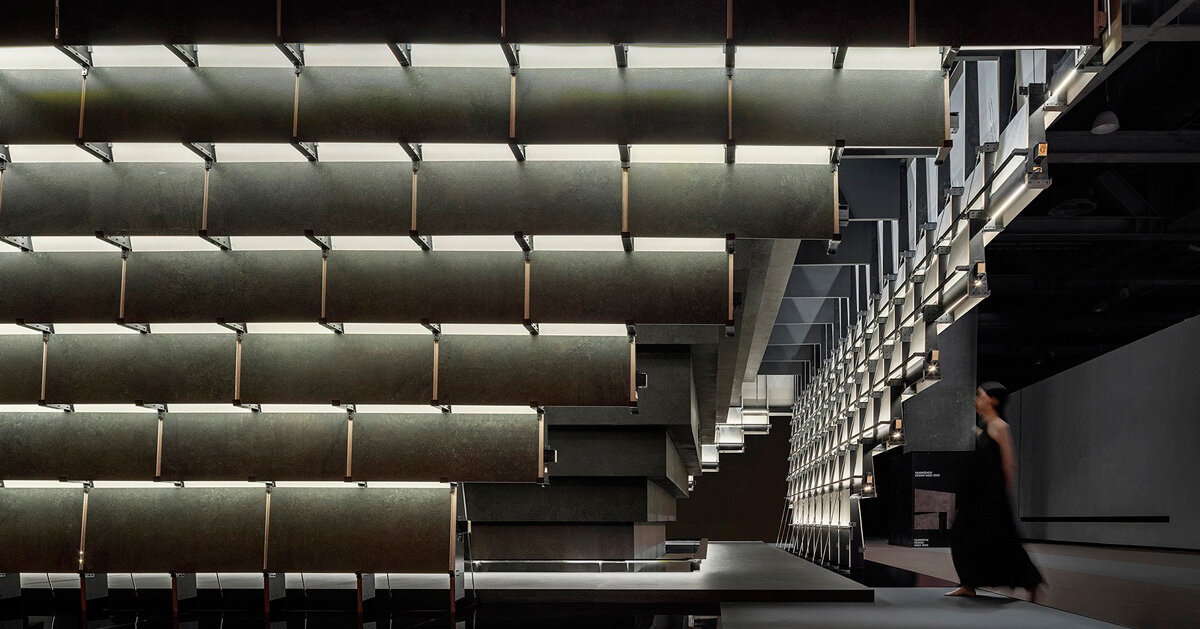
Overhanging staggered pyramid shapes up sheerin pavilion in 2023 guangzhou design week
- Select a language for the TTS:
- UK English Female
- UK English Male
- US English Female
- US English Male
- Australian Female
- Australian Male
- Language selected: (auto detect) - EN
Play all audios:

SHEERIN PAVILION SHOWCASES SINTERED STONE ‘CANYON’ The SHEERIN Pavilion, designed by PMT Partners Ltd. for the 2023 GUANGZHOU Design Week, serves as an EXHIBITION space dedicated to
showcasing sintered STONES. The artificial stones emulate their natural counterparts, creating a spatial ambiance reminiscent of a mined artificial stone canyon. This design approach
establishes an intriguing juxtaposition. The systematic design focuses on the unity of form and force, the connection between behavior and space, and the potential for recyclability of the
exhibition venue, contributing to the exploration of sustainable exhibition construction. all images by Zhaoliang Qin SPATIAL CONFIGURATION EXPLORES THE NOTION OF ‘WANDERING’ The entire
exhibition hall revolves around the central spatial behavior of ‘wandering,’ with pathways guiding visitors through three distinct volumes representing ‘sound,’ ‘light,’ and ‘water.’ The
volumes, arranged in staggered normal and inverted pyramid shapes, form an ‘outer corridor and inner canyon’ spatial structure. The overhanging space creates the ‘Sound Valley’ theater and
the ‘Water Valley’ area, ensuring an authentic relationship between the internal and external elements. The exterior facade showcases a sintered stone surface supported by a wooden
structure, projecting outward and connecting with the beam-on-foundation via steel cables. The spatial and mechanical relationships are based on cross-sections, as PMT PARTNERS LTD. aims to
achieve unity between form and force from a unique perspective. volumes, arranged in staggered pyramid shapes, create an ‘outer corridor and inner canyon’ spatial structure THE DESIGN
CONSIDERS FUTURE POSSIBILITIES BEYOND THE EVENT In designing this exhibition space, the focus was on spatial cross-sections rather than traditional flat functionality, aligning with the
logic envisioned by James Frazer Stirling. Despite being a temporary display space within an exhibition center, the design considers future possibilities beyond the event. The structure is
conceived as an independent building, leaving room for subsequent recycling and potential expansion. After the exhibition, the transformed surface could find new life as bookshelves,
pavilions, or architectural surfaces, offering possibilities such as a community book kiosk, a rural school bookshelf, or a maintenance facade for an old building undergoing renovation. the
design’s systematic approach emphasizes unity of form and force, connection between behavior and space [embedded content] artificial stones mimic natural elements, producing a spatial
ambiance reminiscent of a mined stone canyon
